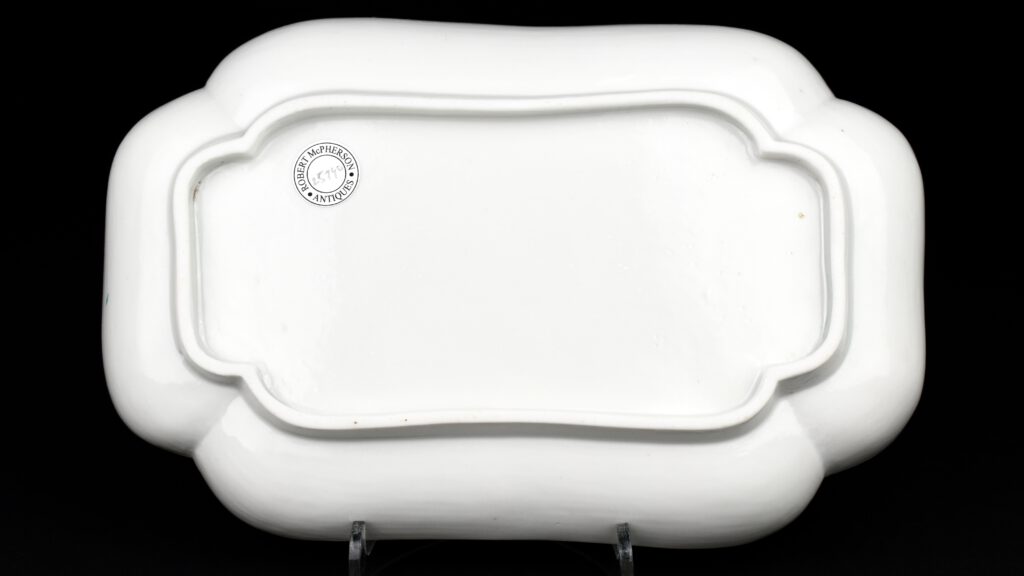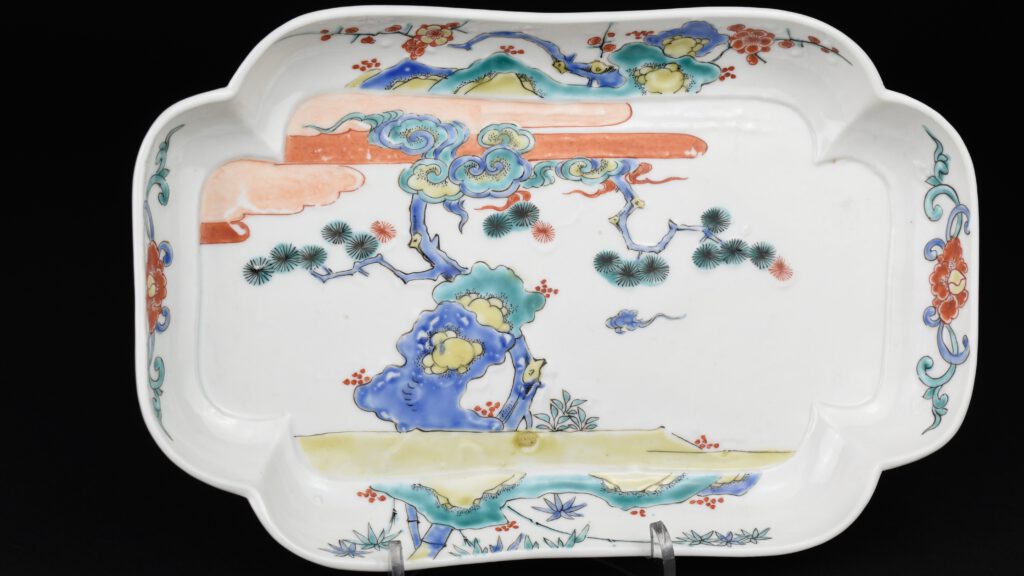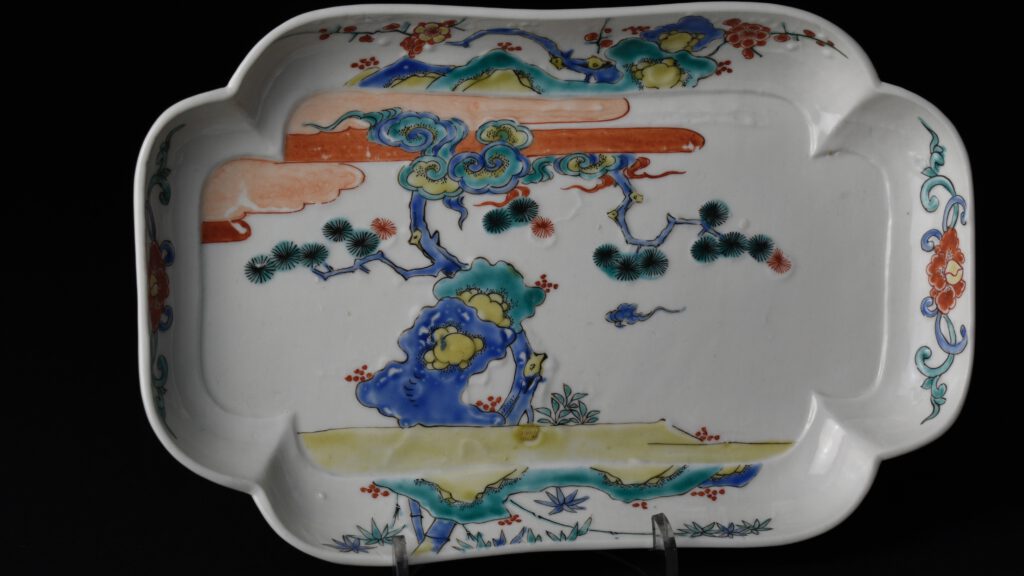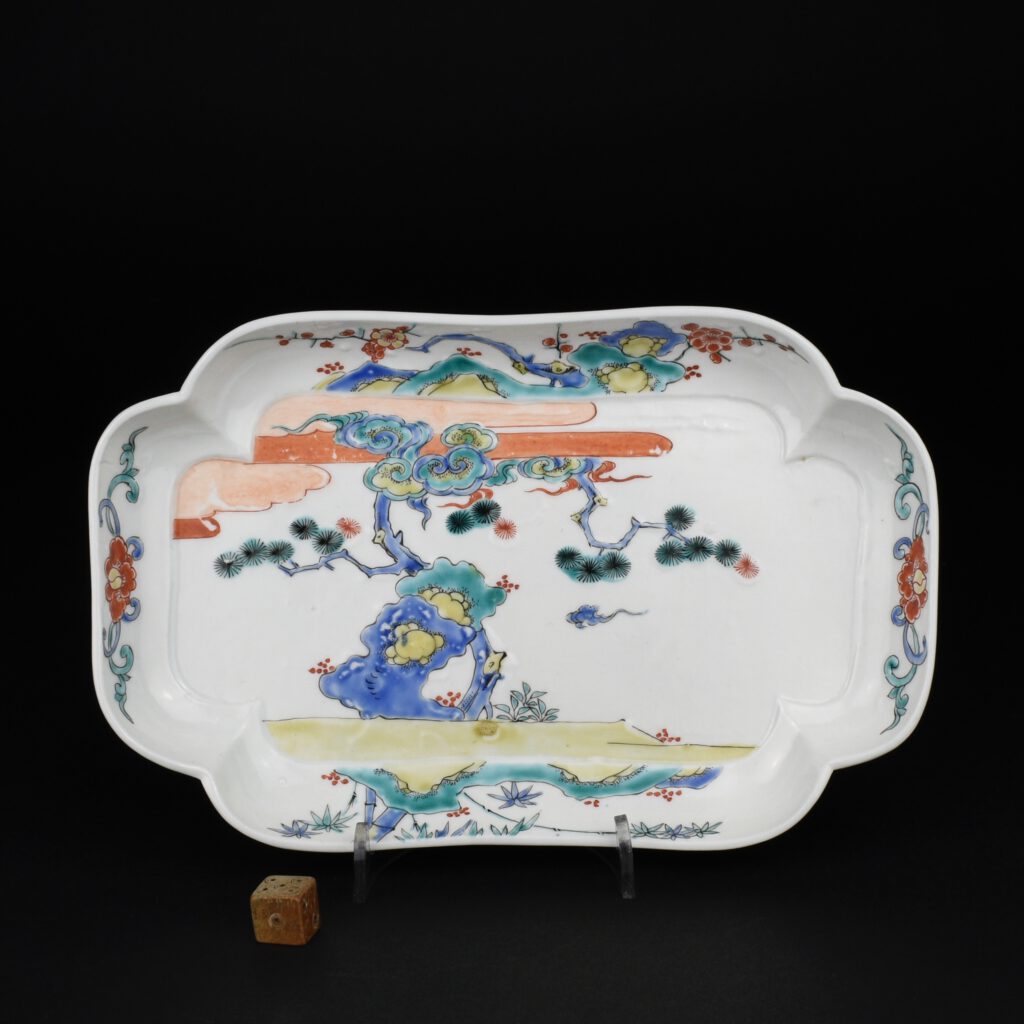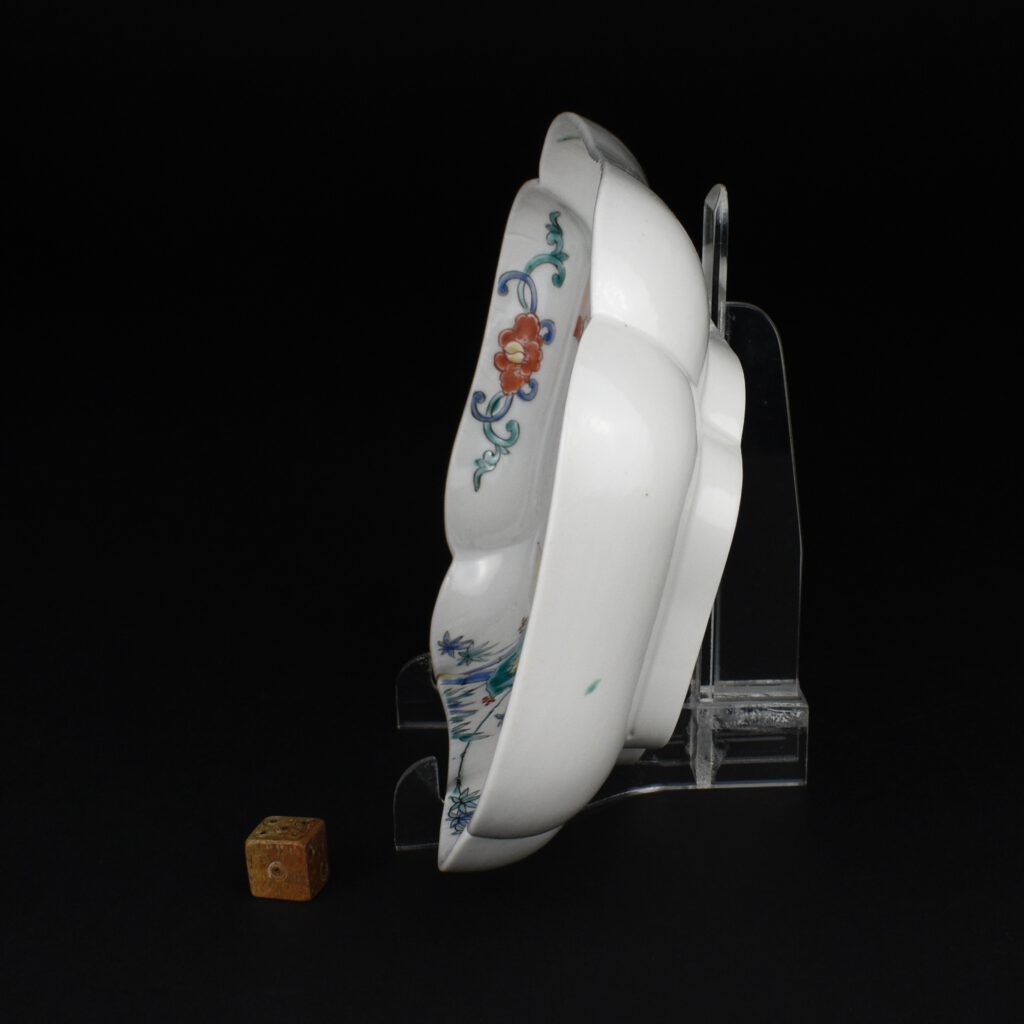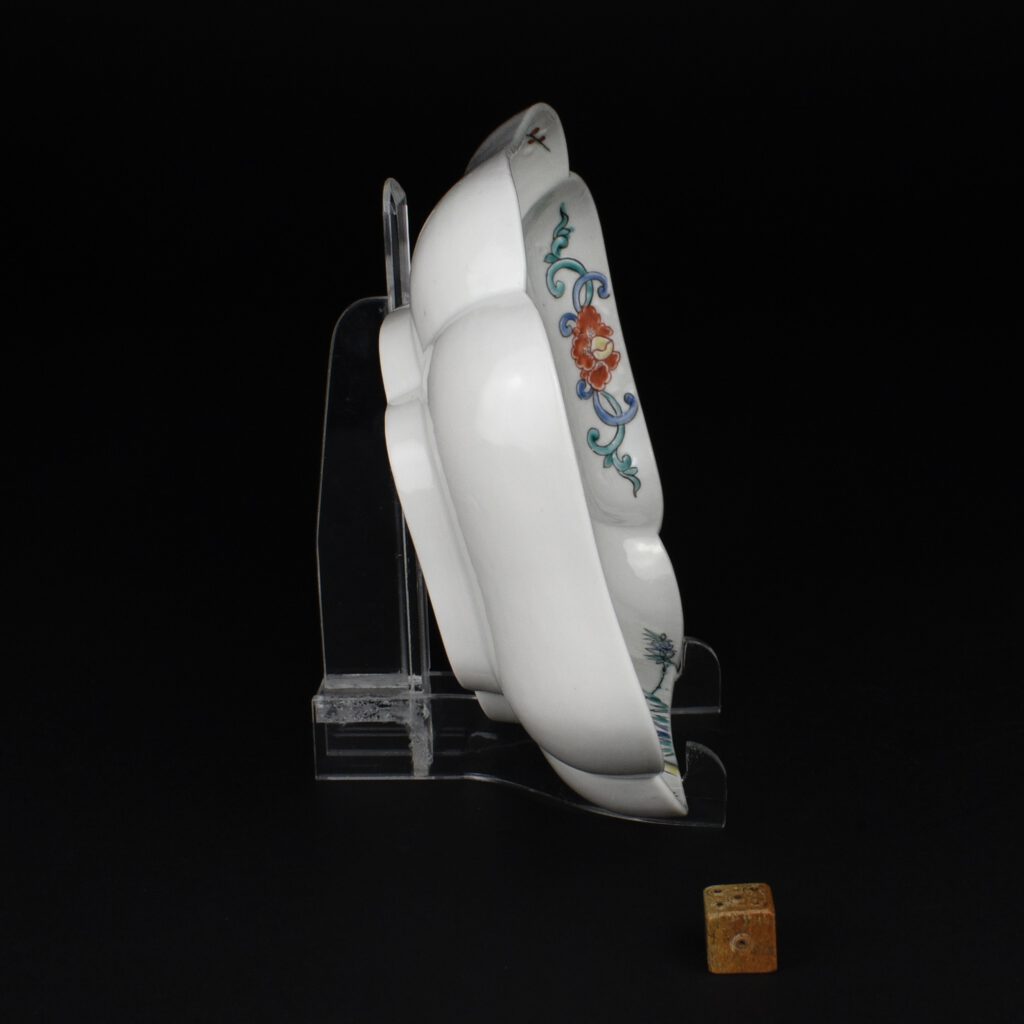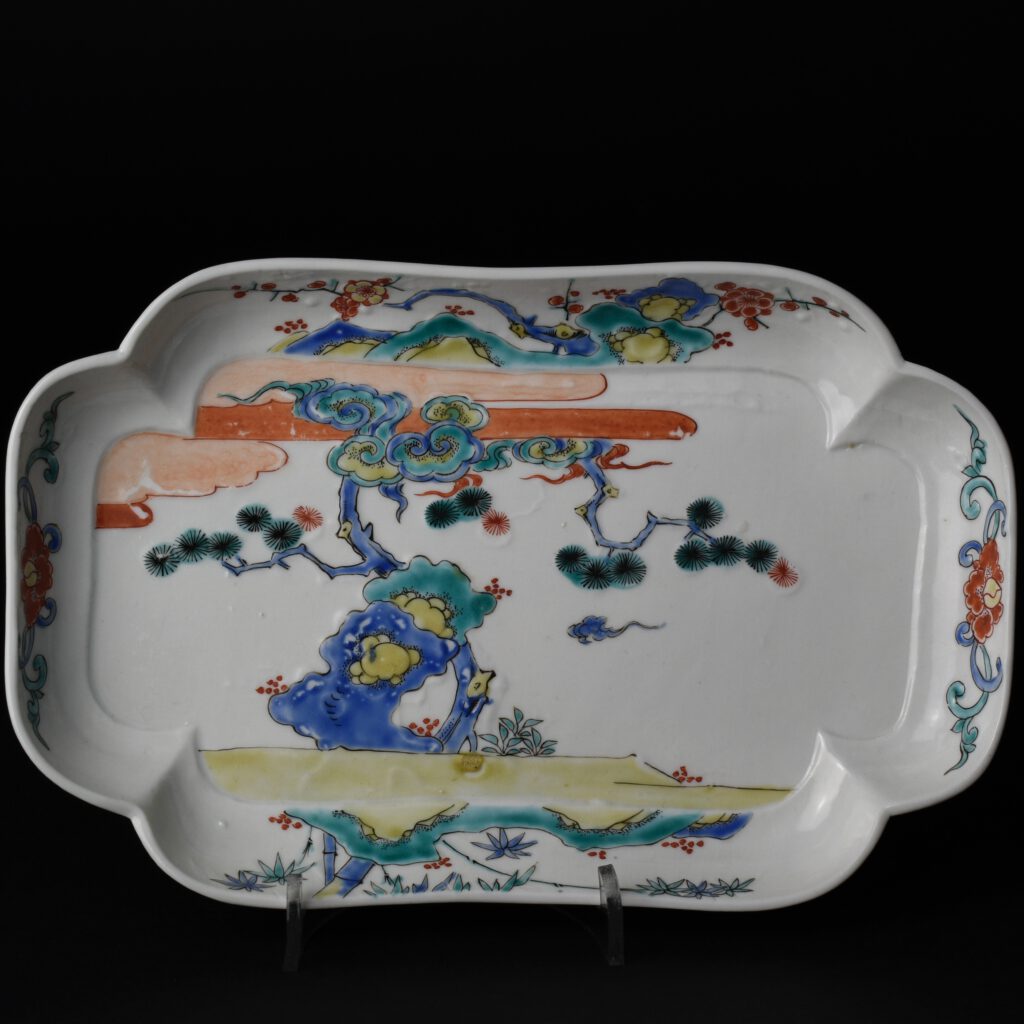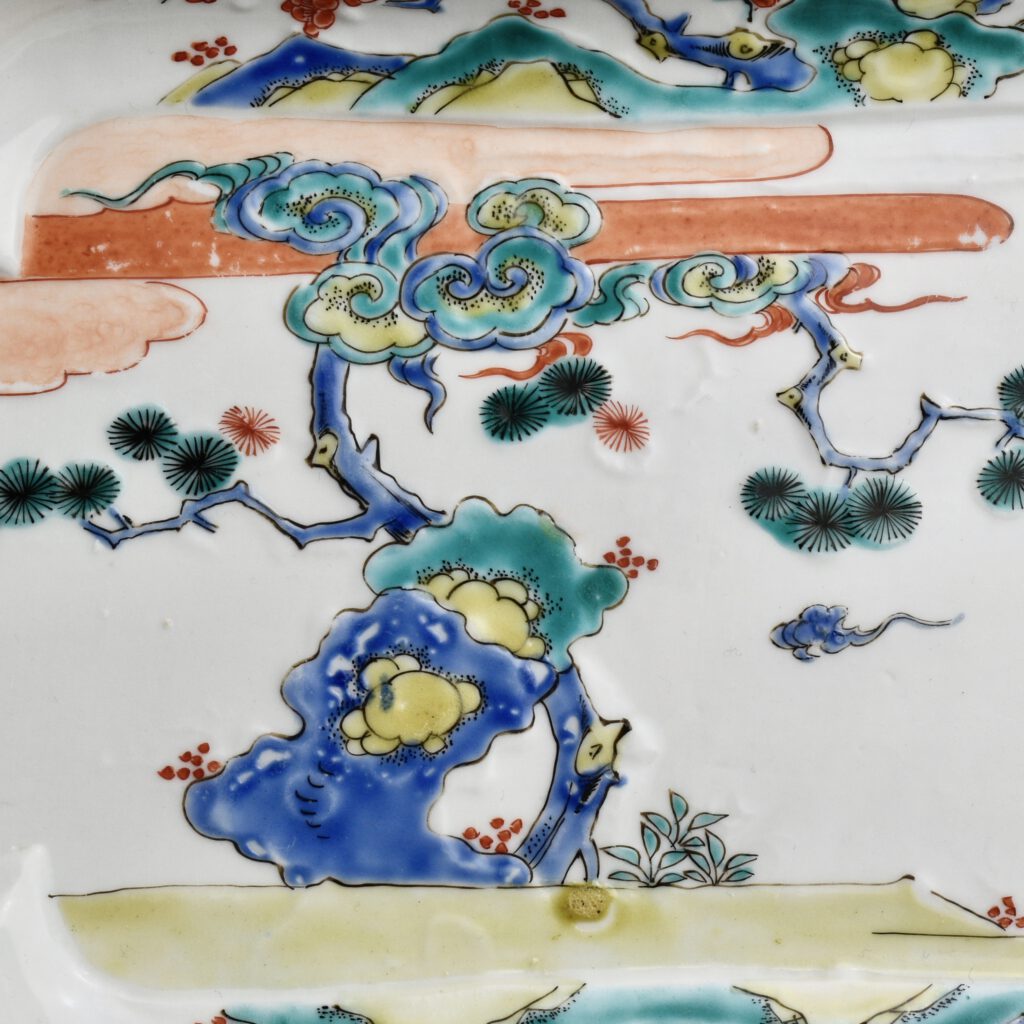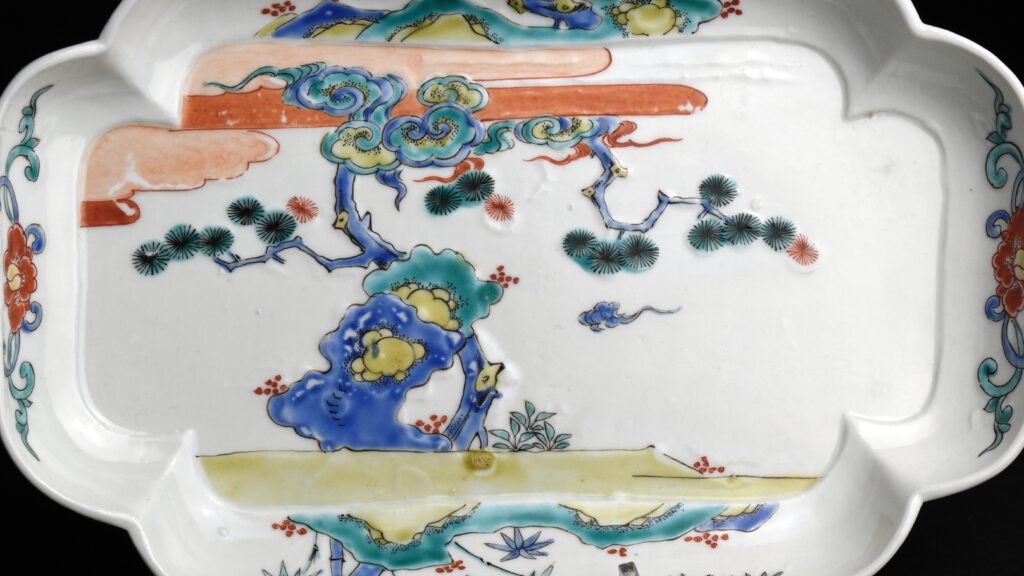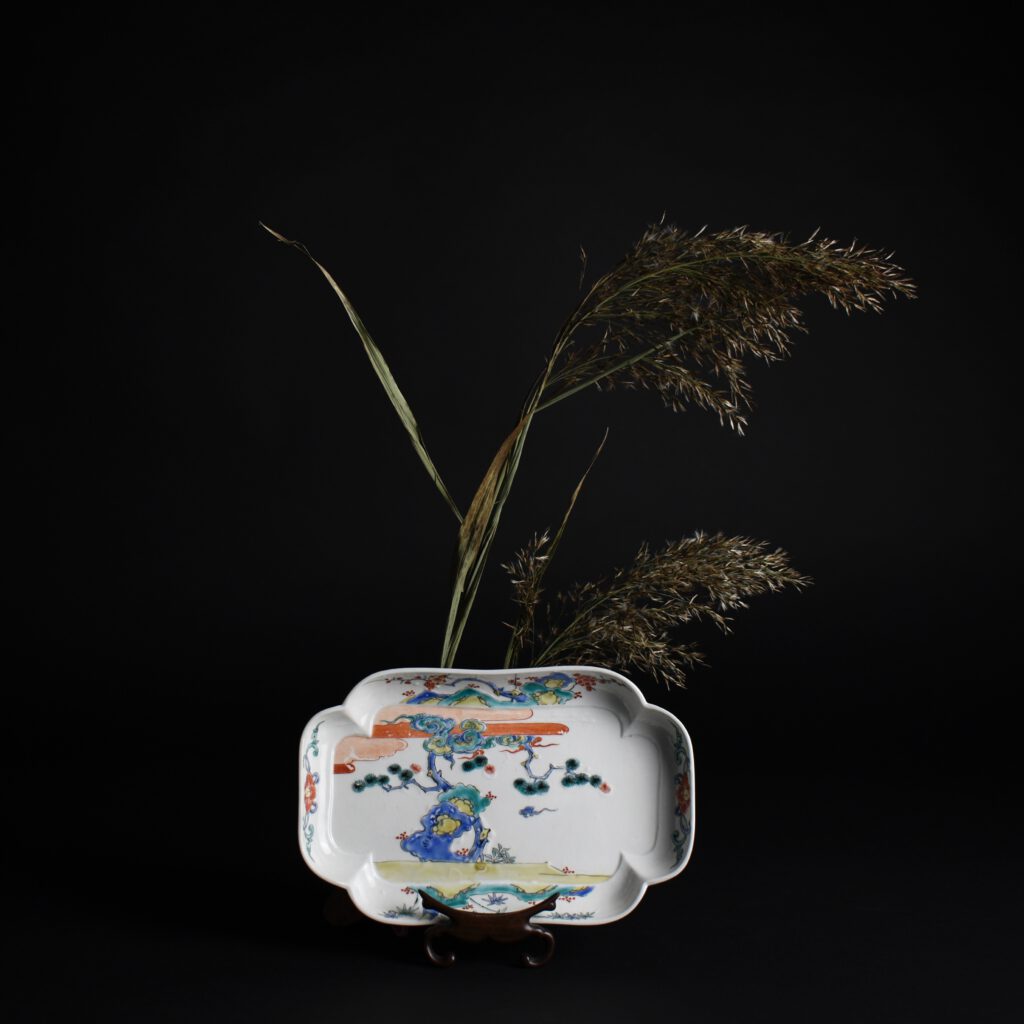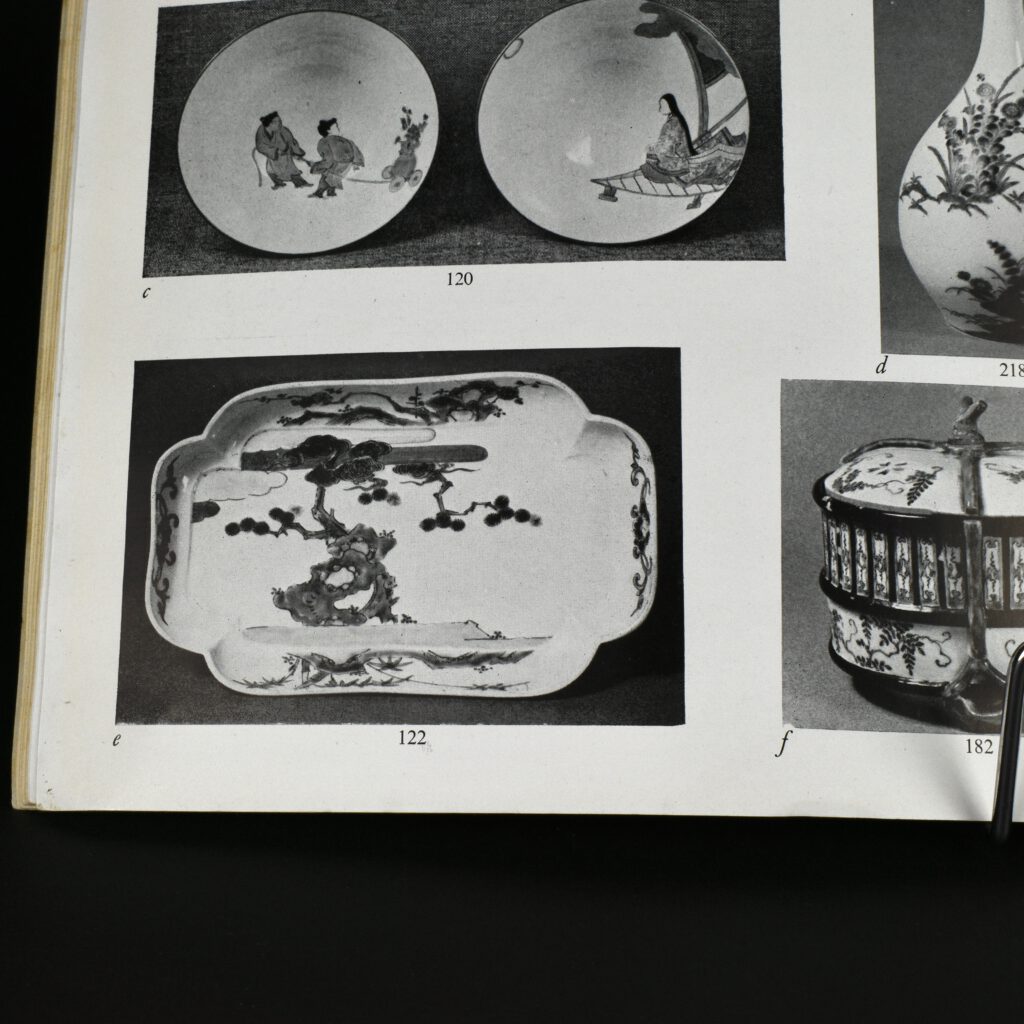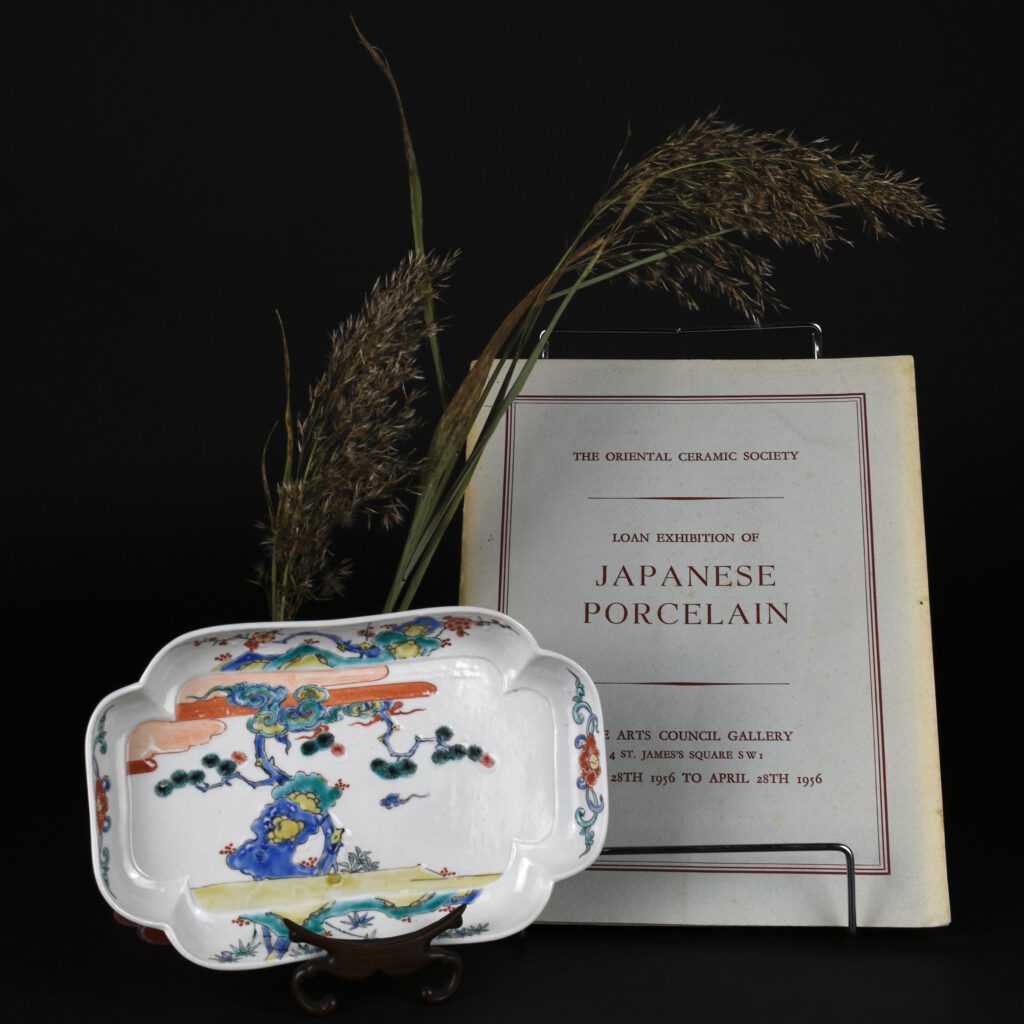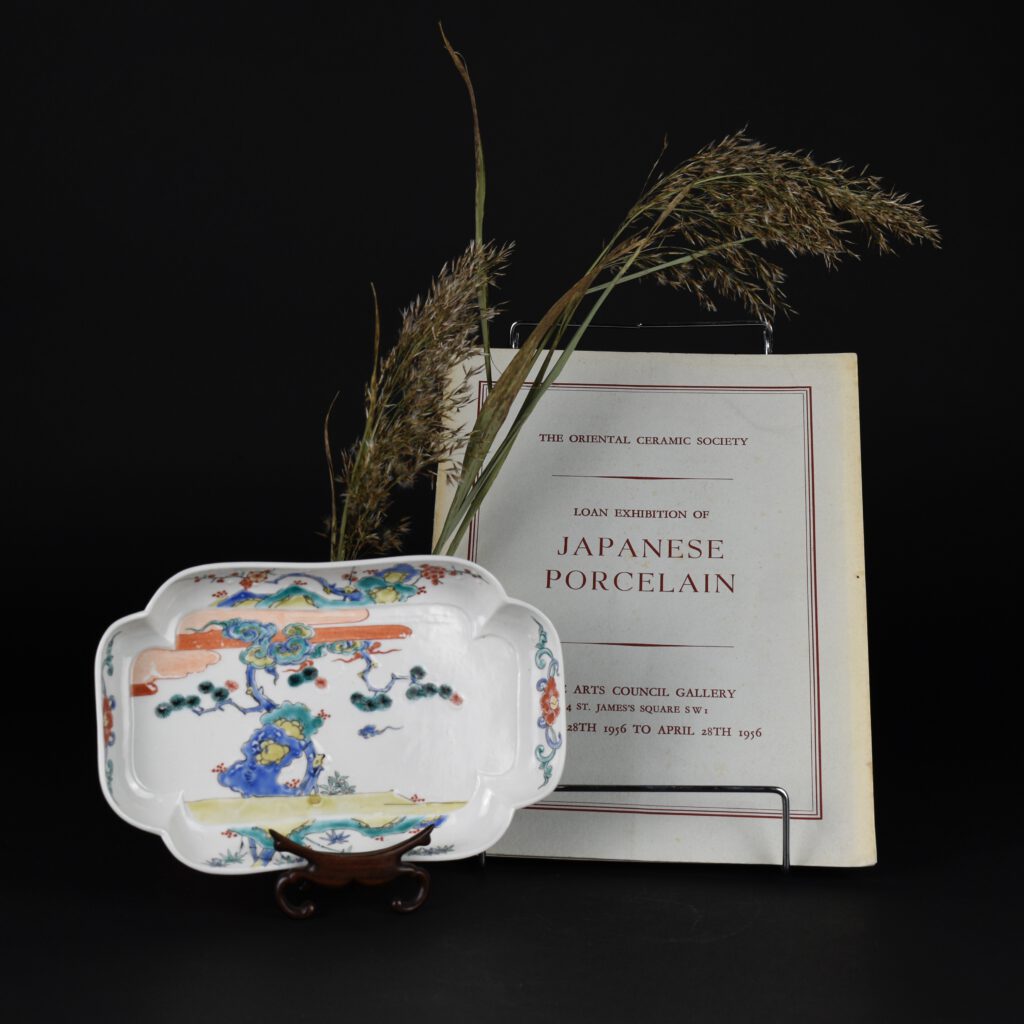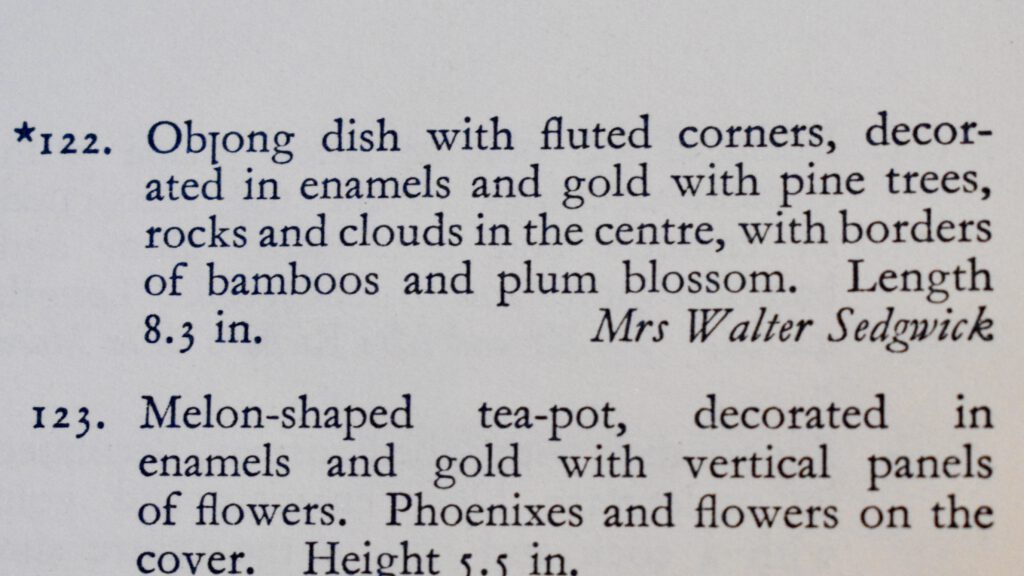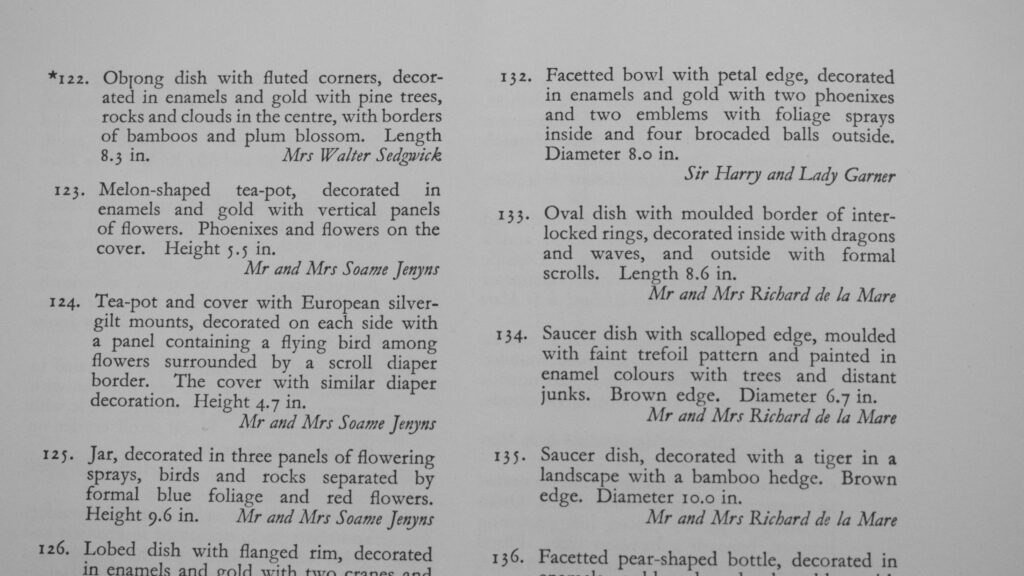
A Fine and Rare 17th Century Kakiemon Porcelain Dish
A Fine Rare 17th Century or Early 18th Century Kakiemon Porcelain Dish from the Collection of Soame Jenyns, Deputy Keeper of Asian Antiquities, British Museum (1950-1968). The lobed oblong shaped shallow serving dish is make using fine Nigoshide (milky white) porcelain. The painting mostly follows the shallow moulding but the painter seems to have used the moulded design as a guide, rather than being a defining feature of the end product. The shape is crisply moulded with a thin pearly glaze containing a subtle hint of green-blue. The decoration centers around a pine tree with a scholars rock in front, the top of the tree is partly obscured by swirling Ruyi fungus clouds with highly stylised iron red clouds. The cavetto, above and below, is of flowering prunus among rocks, the shorter sides are with peony and scrolls. It is possible the dish owned by Mrs. Walter Sedgwick and exhibited at The Oriental Ceramics Society’s ‘Loan Exhibition of Japanese Porcelain’ in 1956 comes from the same set (perhaps five or even ten dishes). Soame Jenyns lent many pieces to this exhibition, including the four items that followed this dish in the catalogue. They were contemporaries and both had a friendship as well as a connection through the The Oriental Ceramics Society in London. See ‘References’ and also the photographs of the catalogue below the photograph gallery. Two Kakiemon porcelain dishes of this design, possibly from the same set were acquired by the British Museum in 1940 see https://www.britishmuseum.org/collection/object/A_1940-0601-2-3
SOLD
- Condition
- In excellent condition. Minor rubbing to some in the iron oxide sky colour. Firing fault - the blue enamel has crawled in places.
- Size
- Diameter 20.8cm (8 1/8 inches).
- Provenance
- Soame Jenyns, Deputy Keeper of Asian Antiquities, British Museum (1950-1968) and thence by decent. Mr. Roger Soame Jenyns (1904-1976) was the foremost scholar of his generation in the arts of Japan and China. He was a discerning collector and a member of the British General Committee of the Royal Academy Exhibition 1935-1956. His books include Later Chinese Ceramics (1951) Ming Pottery and Porcelain (1953) Wares of the Transitional Period between Ming and the Ch'ing 1620-1683 (1955) Japanese Porcelain (1965) Japanese Pottery (1971) and (with Margaret Jourdain) Chinese Export Art in the Eighteenth Century (1950). For more information see : Provenance ; Collectors, Dealers & Scholars : Chinese Ceramics in Britain & America (Roy Davids, Dominic Jellinek, Privately Printed, 2011. ISBN 978-0-9570148-0-0).
- Stock number
- 25790
- References
- For an almost identical Kakiemon dish from the collection of Mrs. Walter Sedgwick see : Loan Exhibition of Japanese Porcelain, The Oriental Ceramics Society, The Arts Council Gallery, 4 St. Jame's Square, London SW1, March 28th to April 28th 1956.
Information
Kakiemon Porcelain
Kakiemon decoration is usually of high quality, often delicate and with well-balanced asymmetric designs. The designs were normally quite sparse emphasizing the fine white porcelain body known in Japan as Nigoshide (milky white). The opaque white milky Nigoshide body was used on the finest pieces, it appears that it was reserved for fine quality enamelled decoration. Kakiemon porcelain was decorated with a great variety of imaginative designs which include elements such as the `banded hedge`, `flying squirrel`, and the `Quail and Millet` design. The `Three Friends of Winter` were also a very popular group of designs, other subject taken from nature include flowers (especially the chrysanthemum, the national flower of Japan) as well as birds and rock-work. Figural subjects such as the `Hob in the Well` were also popular. This design illustrates a Chinese folk tale where a sage saves his friend who has fallen into a large fish-bowl by throwing stones at it, braking open the pot. Banded-Hedges were a formal device within Japanese traditional gardens, they were often incorporated in designs, includes `The Three Friends of Winter` (Pine, Bamboo and Prunus). These three plants signify perseverance, as neither the pine nor the bamboo shed their leaves in winter and the plumb (Prunus) flowers at the very end of the winter, heralding the arrival of spring.
Nigoshide Body
The Nigoshide (milky white) body was a new whiter porcelain body introduced between about 1660 – 1680, solely for use on Kakiemon Wares. Indeed the Kakiemon Palette evolved at the same time. It has recently been proposed that the Nigoshide Body is not a new body at all, rather it is just made from a clay that has been levigated and washed more thoroughly.
